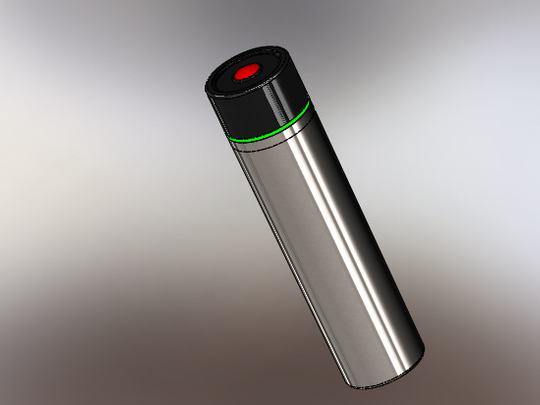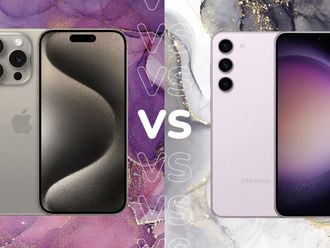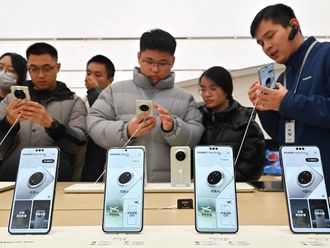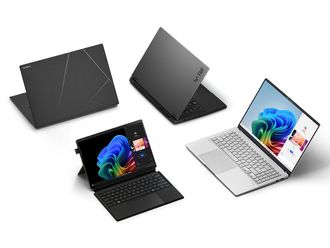
There are some gadgets that exist just because they can. Their makers, presumably, hope that enough people will buy them just because they can. The Internet of Things (IoT) has created a brand-new market segment for sensor-stuffed gear that you can wear, drink from, chew on, even brush with. Or fly. The stuff of selfies Have you been swept up by the selfie wave? If yes, you need the HISY, a Bluetooth-enabled shutter button. Another hot product for selfie snappers is the monopod — the so-called selfie stick. It holds the photographer’s phone in landscape mode to allow for taking bigger, better background shots. Popular makes include Opteka, X Shot and Interfit. If long nails interfere with your touchscreen tapping, try on some Elektra capacitive nails, which conduct an electric charge to let you tap away to glory. Mother likes it “Some are reinventing the light bulb, the bathroom scale, the door lock, the toothbrush, the thermostat... we reinvented mothers,” proclaims Sen.se, the maker of Mother. It is a smart device that watches over you and gives you the “care you need, the care you want”. Mother sits at the head of a family of motion and temperature sensors that you disperse around the house, attach to objects or even to people. These sensors can be used to track things such as how often the fridge door was opened, did you at least brush twice a day, how many cups of coffee were consumed... in fact, think of it as a nagging version of mum. All this data is uploaded to the c l o u d and available on your smartphone for analysis.
Chew properly
Mother is not the only one to nag you about your bad habits. The HAPIfork, billed as a smart fork, monitors the speed at which you eat food. If it thinks you are going too fast (two or more bites within ten seconds), alarm bells go off. Thankfully, these are subtle — a blinking red LED and a gentle buzz. The goal is to get you munching nice and slow, because that is how you “lose weight, feel great”. The HAPIfork has an associated app that tracks how long your eating lasted, the amount of fork servings per minute and the gaps between them. Brush it off The Kolibree claims to be the “world’s first connected electric toothbrush” that adds “intelligence” to your brushing. It does that by analysing your brushing style, duration, frequency and even whether you managed to brush hard-to-reach but important parts of your teeth and gums. All this data is, as you would imagine, passed on to a mobile app, so that you can “take control of your health and teeth with easy- to-understand monitoring and scoring”. Yes, it has gamification elements — the smart brush awards points and cheers you on — that should make it easier to get kids into the habit of brushing regularly. Kolibree claims to turn a once boring activity into a motivating experience. Apparently, it even “helps you outsmart your dentist”. The app can track several smart brushes, and you can share the stats with friends and family, which might turn out to be a great discussion topic at the dinner table as you wait for the HAPIfork to stop buzzing.
Gulp it down
Even the humble water bottle has gone smart. The ILLUMI smartbottle tracks your water intake throughout the day and, if you are falling behind, it sends an alert to your smartphone. The bottle is targeted mainly at office goers who spend entire days in an AC environment. This tends to reduce water intake to unhealthy levels. The smart bottle has a flow sensor built into the lip. When you take a drink, ILUMI automatically registers how much water you took in and then updates its LED ring to the right colours. It also syncs with your phone via Bluetooth to let you know exactly how much water you have taken in. You can set daily goals and get notified when you reach them, with the LED ring turning green.
Off it goes
This one is more along the lines of personal fun than personal care. Who hasn’t, in their childhood, made paper planes and launched them with great gusto? Perhaps you often wish you could do it again, maybe during a boring office day. But a major problem is that paper planes have a flight plan of their own and don’t go exactly where you want.
That’s where PowerUp 3.0 clips in. This smartphone-controlled rudder can convert your self-made paper airplane into a lean mean flying machine. You can fly it upto 55 metres with a single charge delivering ten minutes of flight time. A crash-proof fiber frame means that even if your paper plane falls apart, its engine won’t.










